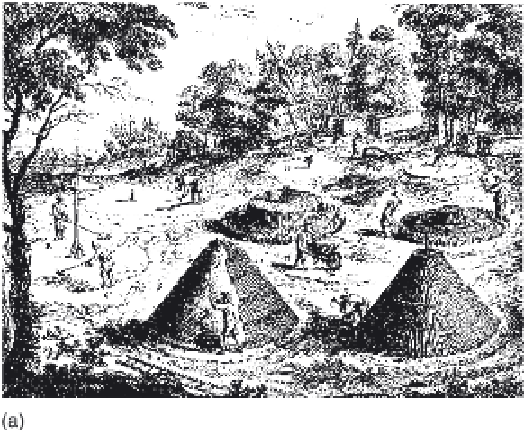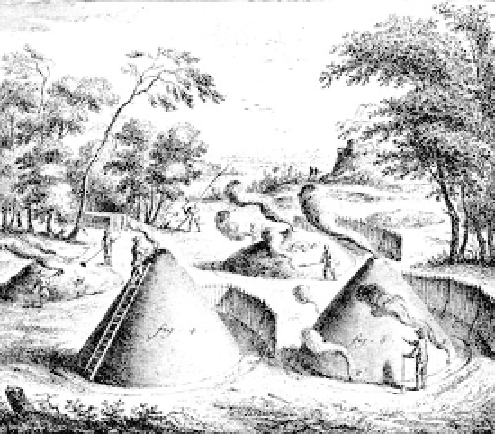Environmental Engineering Reference
In-Depth Information
7.8 (a) Building a charcoal pile. (b) Charcoal production in
mid-eighteenth-century France. From Diderot and D'Alembert
(1751-1772).
tional charcoal making was about 60%. In volumetric
terms, primitive earth kilns needed as much as 24 m
3
of
wood per tonne of charcoal, and even for good practices
the average was between 9-10 m
3
.
Considering the generally low levels of final energy
demand (for cooking, rudimentary space heating, and
artisanal manufacturing), consumption of phytomass
fuels in traditional societies was relatively high owing
to often dismally low conversion efficiencies. Transition
from uncontrolled and inherently inefficient open-air
fires to enclosed, regulated, and efficient burners was
very slow. Moving open fire inside made little difference.
Fireplaces that dominated European cooking and heating
for centuries performed quite poorly; as they drew the
needed combustion air from the room, they warmed
the immediate vicinity of the hearth with radiated heat,
but their operation amounted to an overall loss of inte-
rior heat.
There were some ancient ingenious ways of using phy-
tomass efficiently, none more so than three space heating
systems that provided an uncommon degree of comfort.
The first two used combustion gases to heat raised room
floors before leaving through a chimney. The Roman
hypocaust—of Greek origin, with the oldest remains from
the third and second centuries
B
.
C
.
E
., found both in
Greece and in Magna Graecia (Ginouv`s 1962)—was
first used by the Romans in the caldaria of their public
baths, then spread to stone houses in colder provinces of
the empire. The Korean ondol (warm stone) led the hot
combustion gases from the kitchen (or from additional






